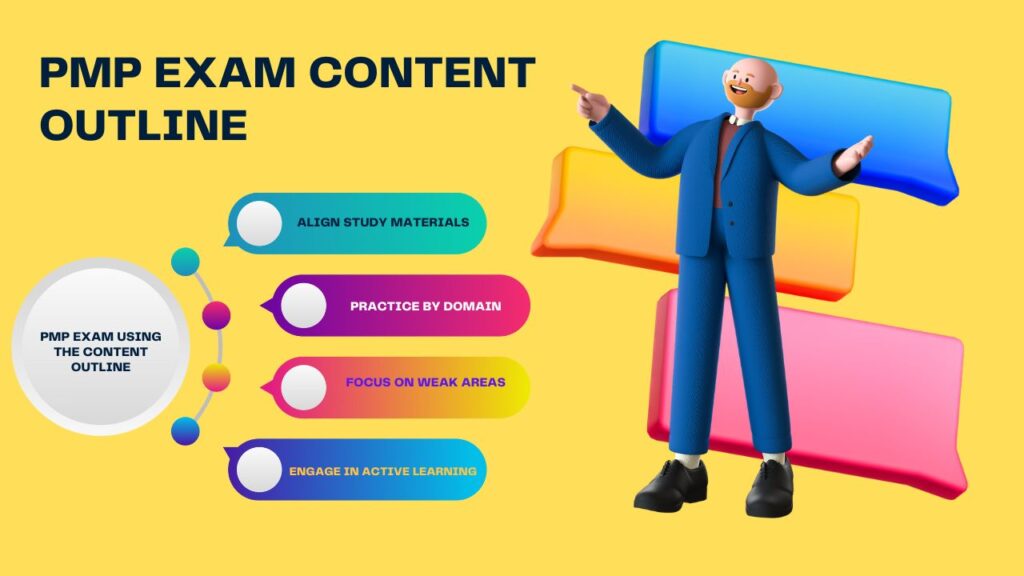The Project Management Professional (PMP) certification is a gold standard for project managers worldwide, recognized across industries for its rigorous assessment of a candidate’s competence in project management. Central to preparing for this challenging exam is a thorough understanding of the PMP Exam Content Outline, a document published by the Project Management Institute (PMI) that delineates the exam framework, including the domains covered and the tasks and knowledge areas candidates are expected to master. This blog post offers a detailed exploration of the PMP Exam Content Outline, providing insights and strategies to help candidates navigate their exam preparation effectively.
Table of Contents
Understanding the PMP Exam Content Outline
The PMP Exam Content Outline is structured around three main domains that reflect the comprehensive nature of project management. These domains encompass the core competencies that every project manager should possess, as outlined by PMI’s role delineation study and practitioner surveys. Below is a breakdown of these domains and what they entail:
1. People: Emphasizing the Soft Skills in Project Management
Managing teams effectively is crucial for project success. This domain covers the interpersonal and leadership skills required to guide, motivate, and ensure project teams work collaboratively. Key areas include:
- Conflict resolution
- Team building and motivation
- Empowering team members and stakeholders
- Ensuring team performance
2. Process: Reinforcing the Technical Aspects of Project Management
This domain focuses on the technical phases of project management, from initiation through planning, execution, monitoring, controlling, and closure. Competencies in this domain ensure that project managers can effectively manage the project’s scope, schedule, budget, and resources. Key components include:
- Project governance and lifecycle
- Methodology selection and application
- Work breakdown structure (WBS) creation
- Project risk management
3. Business Environment: Aligning Projects with Organizational Strategy
Projects do not exist in a vacuum; they are influenced by and impact the broader business environment. This domain addresses the connection between projects and organizational strategy, highlighting the need for project managers to understand and navigate this interplay. Areas of focus include:
- Compliance and regulatory awareness
- Benefits management and realization
- Change management and organizational governance
Preparing for the PMP Exam Using the Content Outline
Understanding the Exam Content Outline is just the first step; translating this understanding into effective study strategies is what ultimately propels candidates toward success. Here are some tips for using the outline to guide your exam preparation:
- Align Study Materials: Ensure your study materials comprehensively cover the knowledge areas and tasks listed in the content outline. Supplement with additional resources where necessary.
- Practice by Domain: Organize your practice questions and mock exams by domain to identify areas of strength and improvement.
- Focus on Weak Areas: Use the content outline to pinpoint and focus on areas where your knowledge or experience is lacking.
- Engage in Active Learning: Beyond reading and memorization, engage in discussions, study groups, and practical application of concepts to deepen your understanding.
Conclusion
The PMP Exam Content Outline is an invaluable tool for candidates preparing for the PMP certification exam. By providing a clear framework of what is expected, it allows for targeted, efficient study. As the field of project management continues to evolve, so too does the content outline, ensuring that the PMP certification remains relevant and reflective of current best practices and industry standards. With diligent preparation guided by this outline, candidates can approach their PMP exam with confidence.






